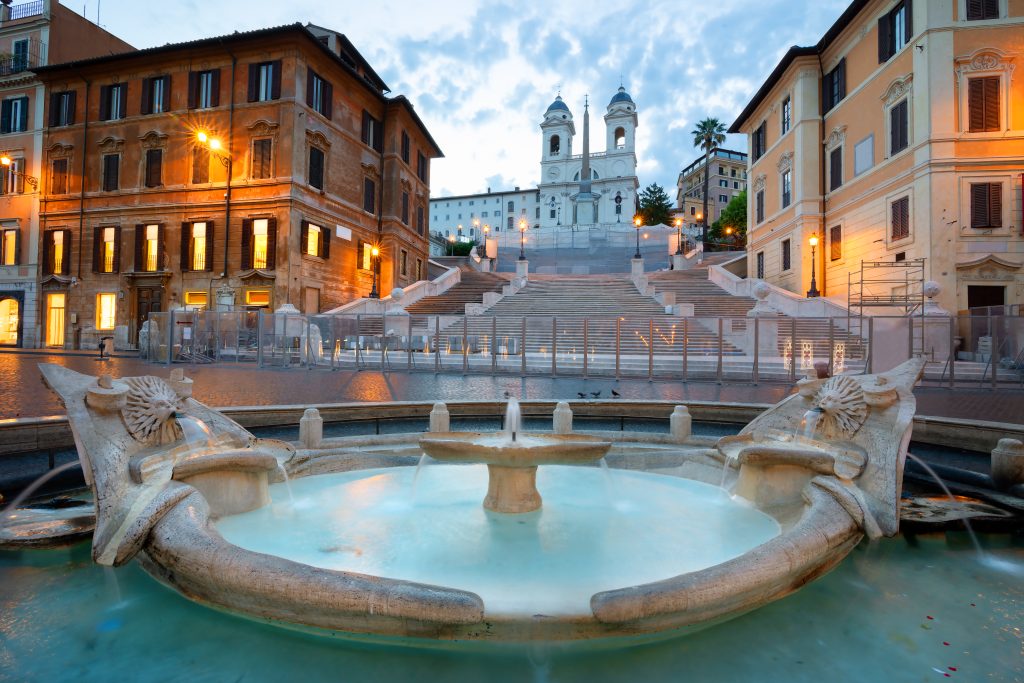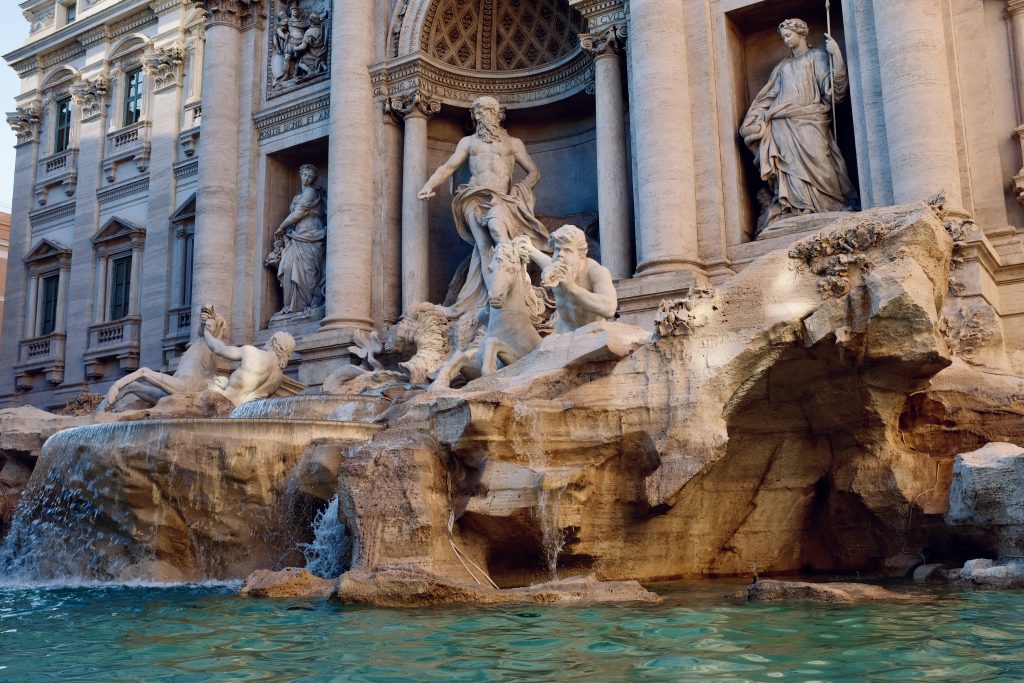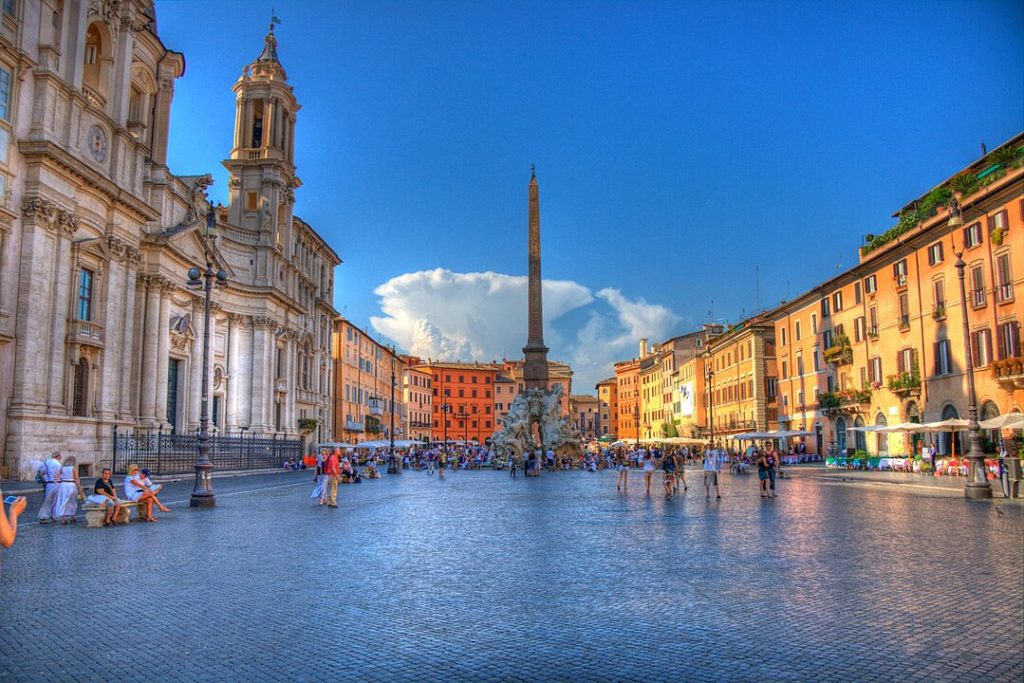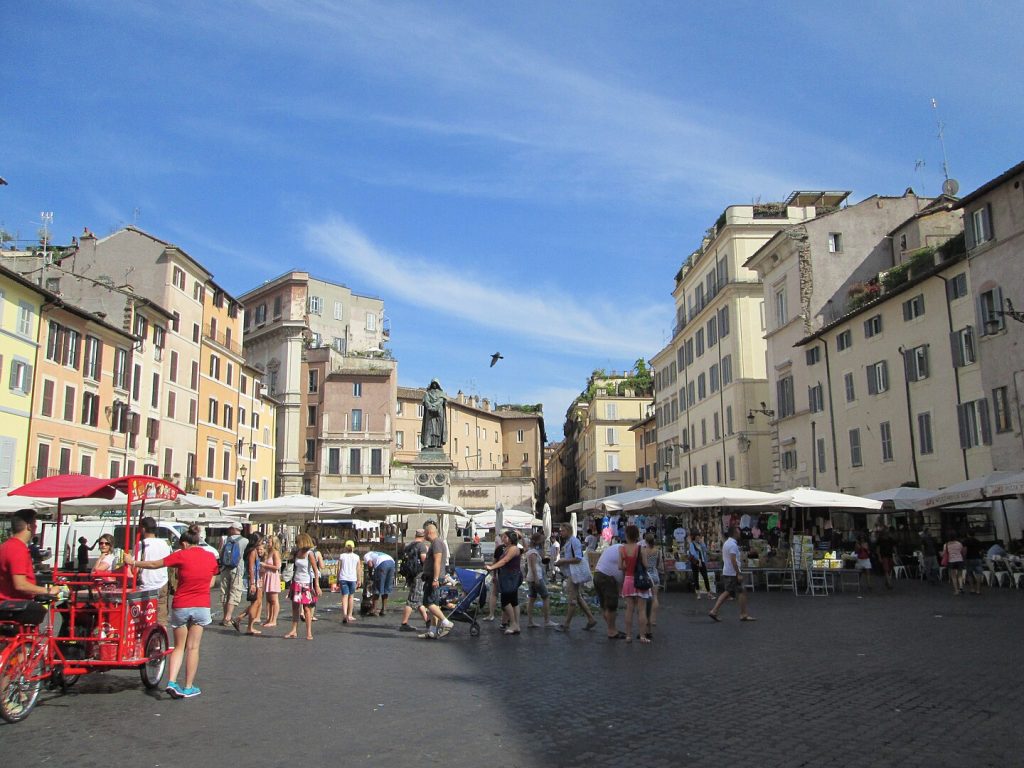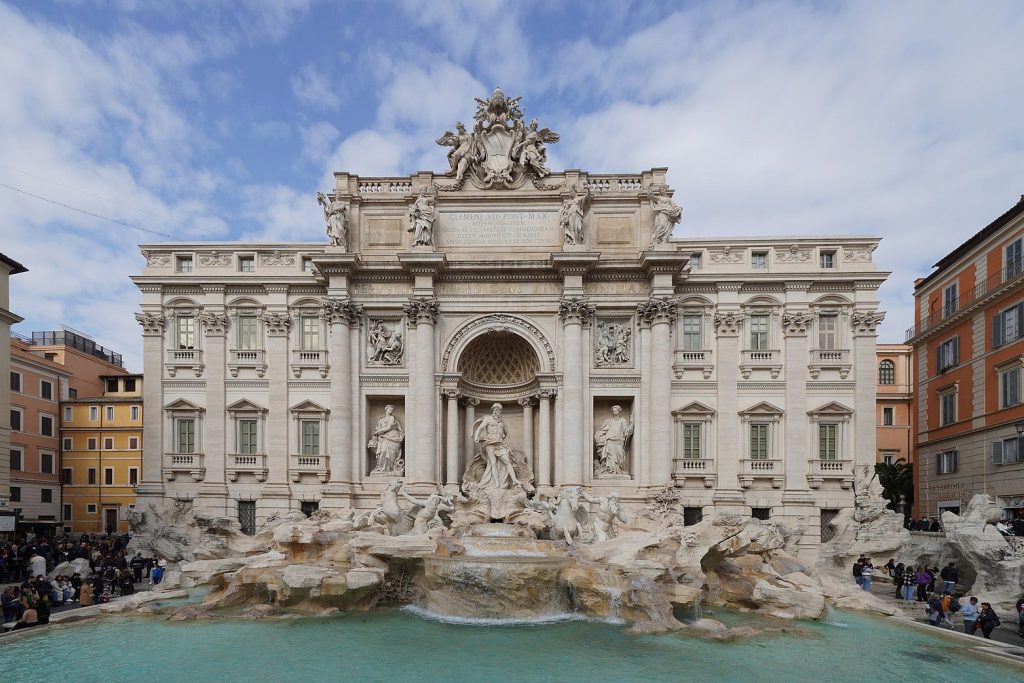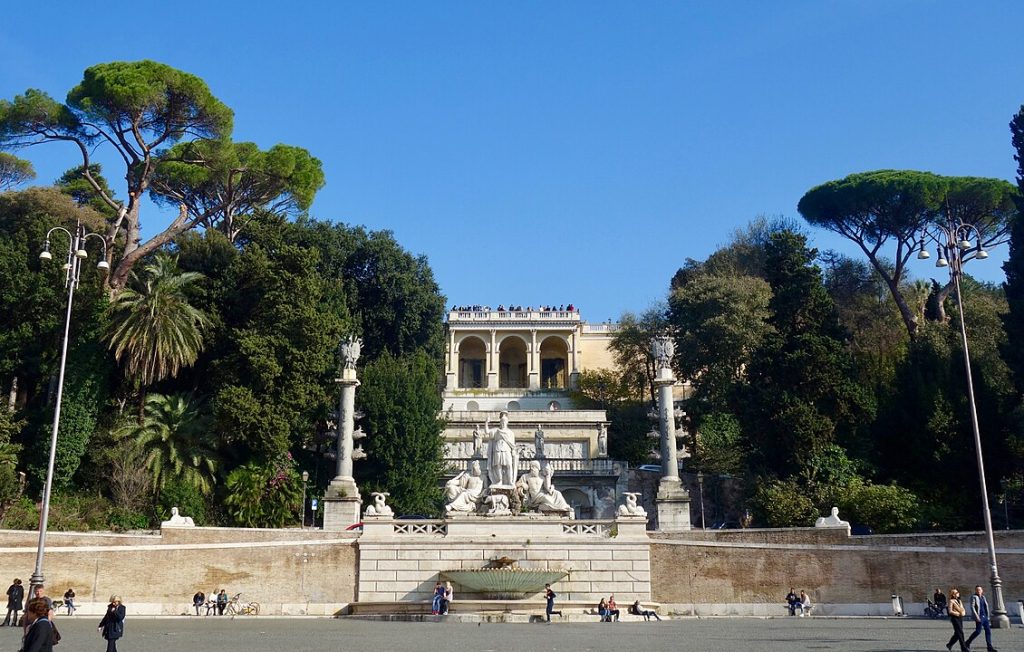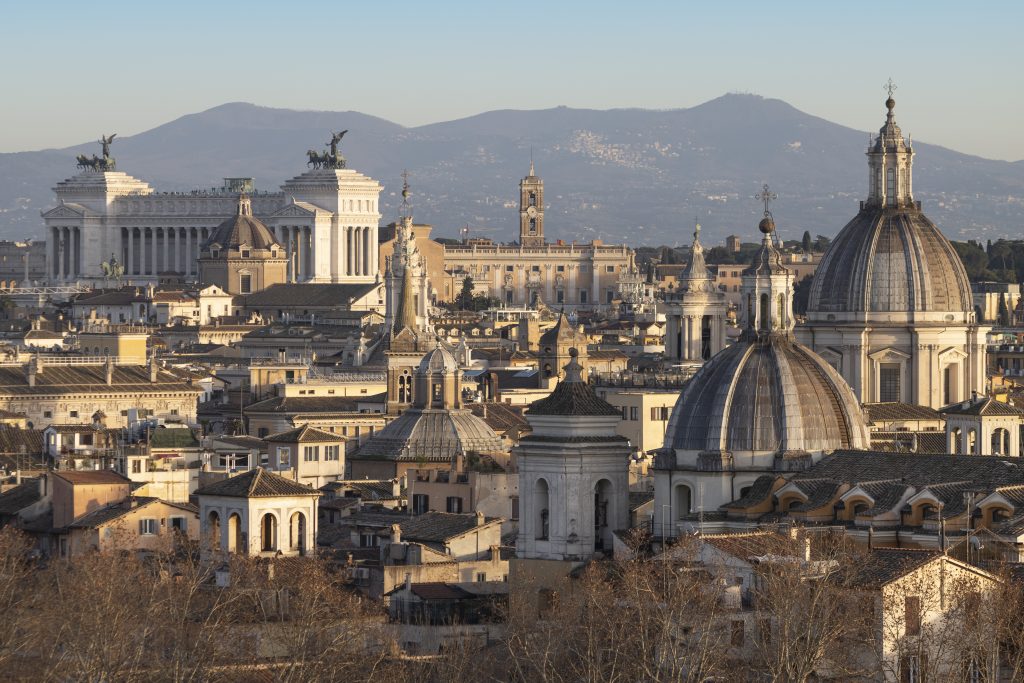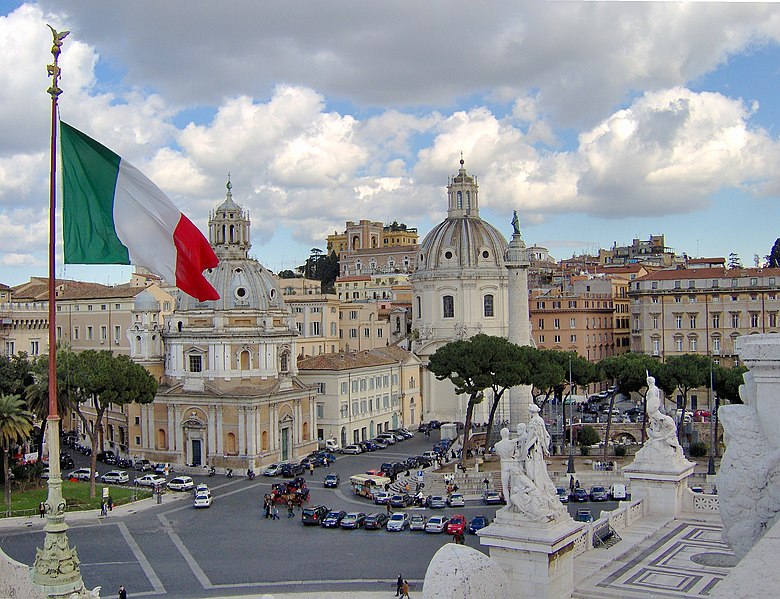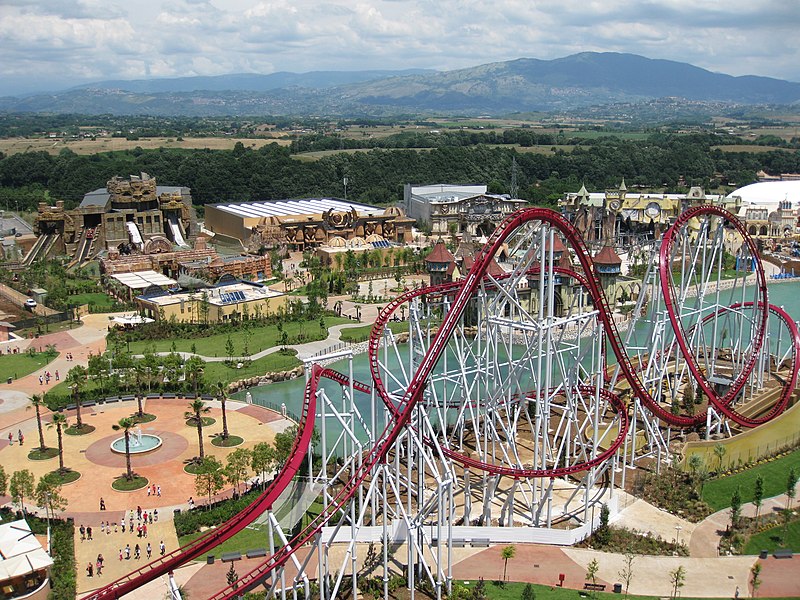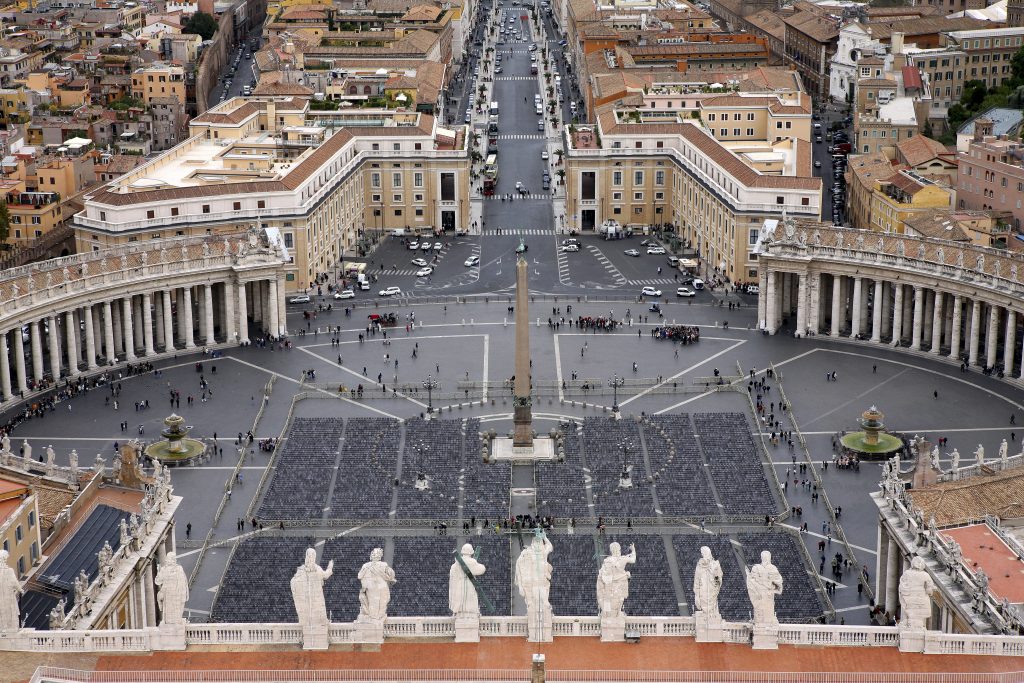- 1️⃣ Introduction - symbolic entrance to the Eternal City
- 2️⃣ History of Piazza del Popolo - from necropolis to representative square
- 3️⃣ Twin churches - Santa Maria in Montesanto and Santa Maria dei Miracoli
- 4️⃣ Obelisk Flaminio - an Egyptian touch in the heart of Rome
- 5️⃣ Porta del Popolo - gate of pilgrims and emperors
- 6️⃣ Church of Santa Maria del Popolo - a jewel of the Renaissance and Baroque
- 7️⃣ View from Pincio Terrace - the best photos of Rome
- 8️⃣ Piazza del Popolo today - walk, events, relaxation
1️⃣ Introduction - symbolic entrance to the Eternal City
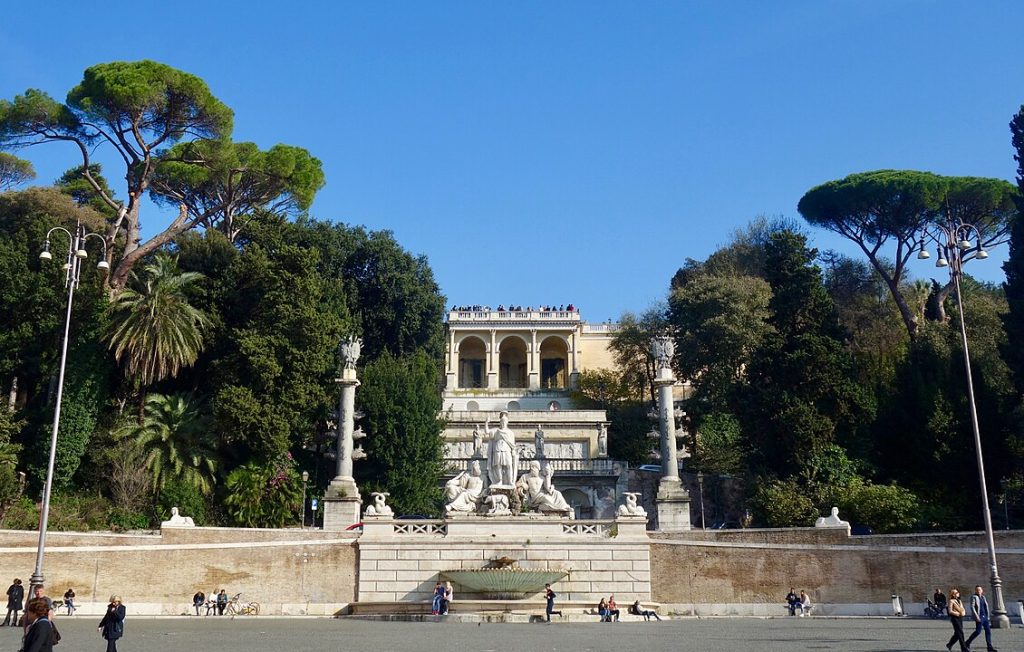
Piazza del Popolo, i.e. "People's Square", for centuries, was one of the first places seen by travelers arriving in Rome from the north. It was here, through a monumental gate Porta del Popolo, entered by pilgrims heading to the Vatican or to the heart of the ancient city. Today, the square still serves as a kind of prologue to discovering Rome -. vibrant, impresses with its symmetry and is an excellent starting point for further sightseeing.
Surrounded by elegant buildings and historic temples, Piazza del Popolo is like an invitation to the world, where art, history and everyday life mingle at every turn. Regardless of the time of day, the square exudes a unique atmosphere -. The morning is full of local residents, afternoon tourists, a in the evening turns into a meeting space and street music.
2️⃣ History of Piazza del Popolo - from necropolis to representative square
🏛 Visiting the Eternal City for the first time?
👉 Meet Top 15 attractions in Rome - classics and hidden gems!
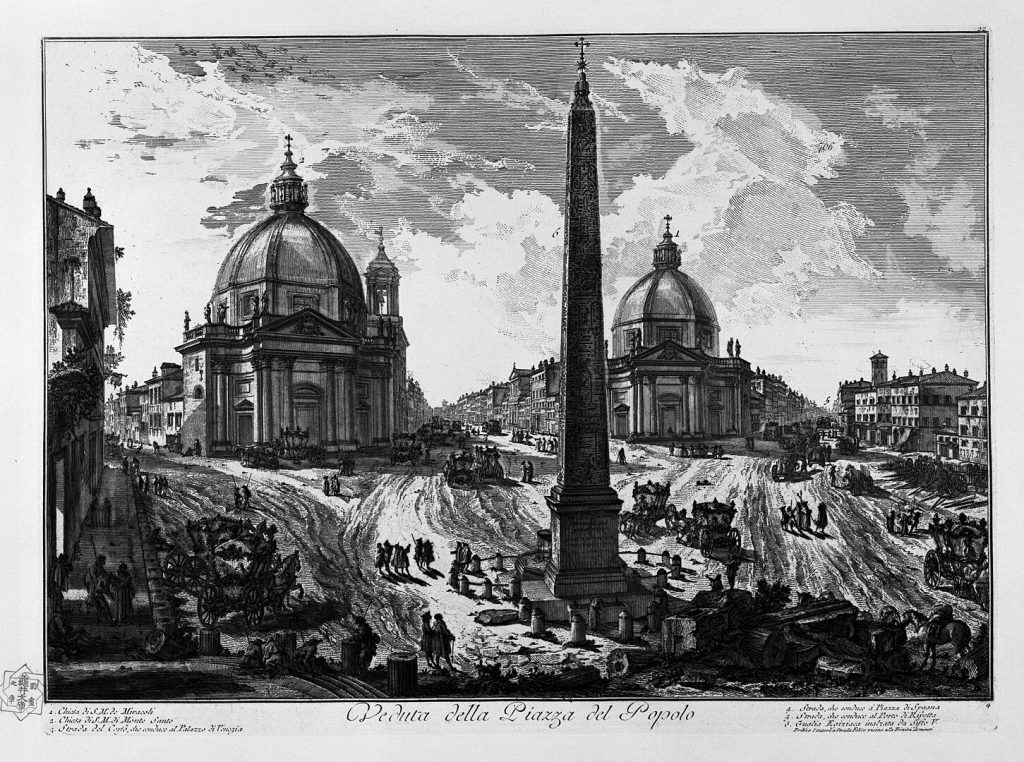
Although today Piazza del Popolo is associated with a majestic urban space, its history goes back much further - all the way to ancient Roman times. The area has changed its functions over the centuries, transforming from a burial site to a representative entrance to the city.
💠 From the tombs to the city gate
In ancient times there was a necropolis, and by the nearby Via Flaminia entered Rome from the north. It was this way that pilgrims heading to the Vatican followed. In the Middle Ages, the place gained religious significance - there was established here Church of Santa Maria del Popolo, built according to tradition on the site where the cursed stand of Nero trees grew.
💠 Renaissance and urban transformation
During the Renaissance and Baroque, the square began to be reshaped. Particularly influential was Pope Alexander VII, who commissioned the Gianlorenzo Bernini Redesigning the space - so that it delights arriving travelers. The resulting symmetrical arms of the square, and the place took on a monumental character.
💠 Modern elegance and public function
In the 19th century, the Piazza del Popolo gained its current appearance, elliptical shape, which we know today. Gradually, it became not only a landmark, but also a A favorite place for walks, events and gatherings. Today it combines history, art and urban rhythm - being a living monument to Rome's transformation.
3️⃣ Twin churches - Santa Maria in Montesanto and Santa Maria dei Miracoli
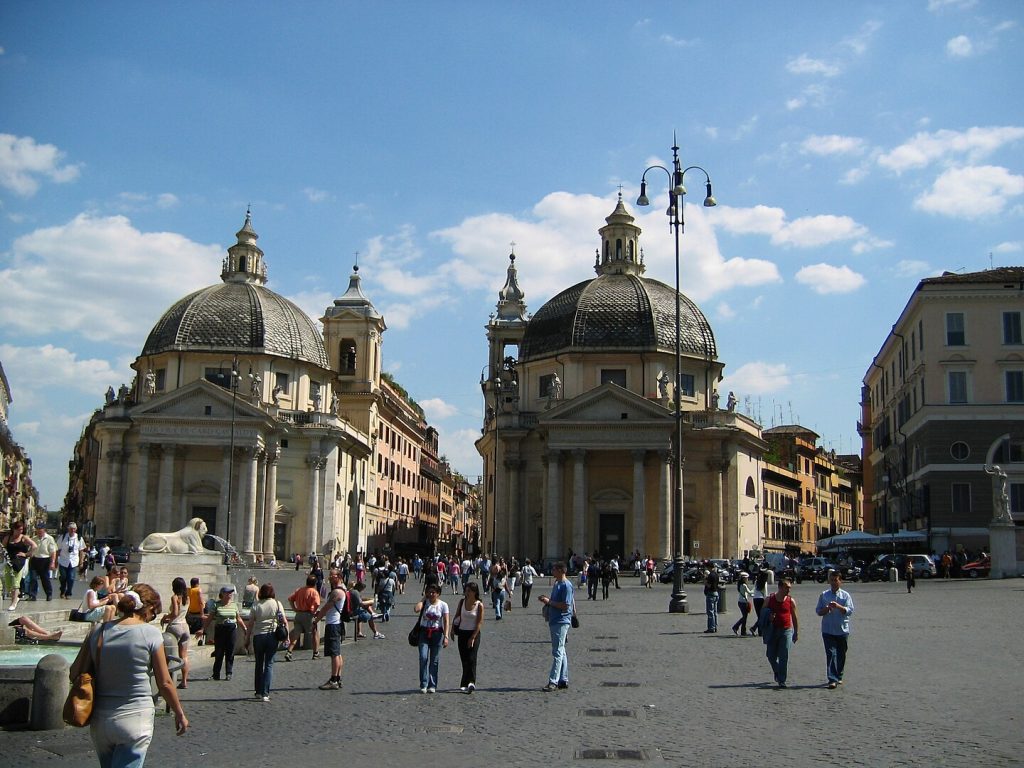
At the southern end of Piazza del Popolo, attention is drawn to two almost identical temples that, like a gateway, lead strollers toward Via del Corso. Although at first glance they look like mirror images, in reality they differ in architectural details and the history of their construction.
💠 Symbolic entrance to the Tridente
Churches Santa Maria in Montesanto (left) and Santa Maria dei Miracoli (right) create an impression of harmony and symmetry. They were built in the second half of the 17th century on the initiative of Pope Alexander VII. Their task was to beautify the beginning of the so-called "The Church of the Holy Spirit". Tridente - Three main streets spread radially from the square: Via del Corso, Via del Babuino i Via di Ripetta.
💠 Differences in similarity
Among others, he was responsible for the project. Carlo Rainaldi, and later Gian Lorenzo Bernini i Carlo Fontana. Despite the similar facade, the differences are due to the shape of the land -. Santa Maria in Montesanto has an elliptical plane, and Santa Maria dei Miracoli - circular. The interiors also vary in layout and design.
💠 A place of art and worship
Both temples are not only architectural monuments, but also active places of worship and popular classical music concert locations. Juxtaposed side by side, they form a unique architectural duo - which is one of the square's most recognizable landmarks.
4️⃣ Obelisk Flaminio - an Egyptian touch in the heart of Rome
🏞 Square is more than a space
👉 See Top 5 most beautiful squares in Rome
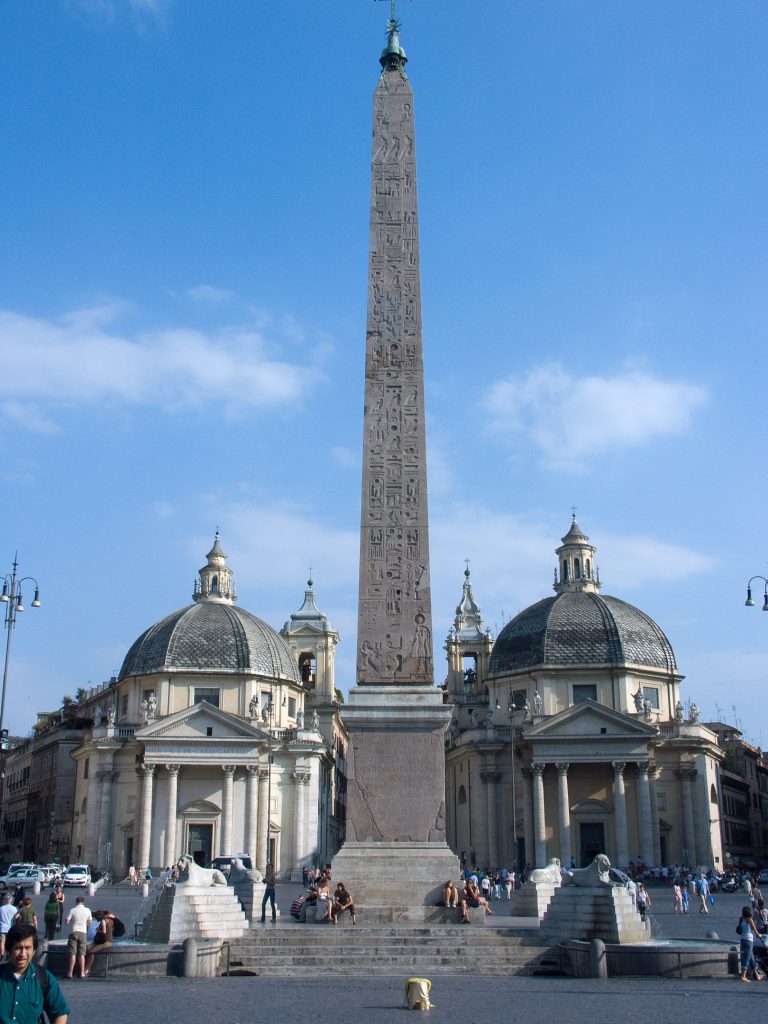
In the very center of the Piazza del Popolo rises the majestic Flaminio obelisk, one of the oldest and tallest obelisks in Rome. It is a remarkable example of how Egypt's ancient heritage was woven into Roman urban space - for both religious and prestigious reasons.
💠 From Egypt to Rome
The obelisk was made in the 13th century BC during the reign of Pharaoh Ramses II and originally stood in front of a temple in Heliopolis. It came to Rome in 10 BC, brought by the Emperor Augustus After the conquest of Egypt, as a symbol of the empire's triumph.
💠 New life in Piazza del Popolo
Initially set to Circus Maximus, lay forgotten for centuries. In the 16th century it was found, and in 1589 Pope Sixtus V ordered its relocation to Piazza del Popolo. It was placed on the a high pedestal with four lions, which gave it an even more monumental character.
💠 Urban axis and focal point
The obelisk serves not only a decorative function - it is also a the focal point of the square's composition, around which the entire space has been organized. Its presence combines The ancient tradition with the papal vision of a modern city, representing one of the most beautiful examples of Roman eclecticism.
5️⃣ Porta del Popolo - gate of pilgrims and emperors
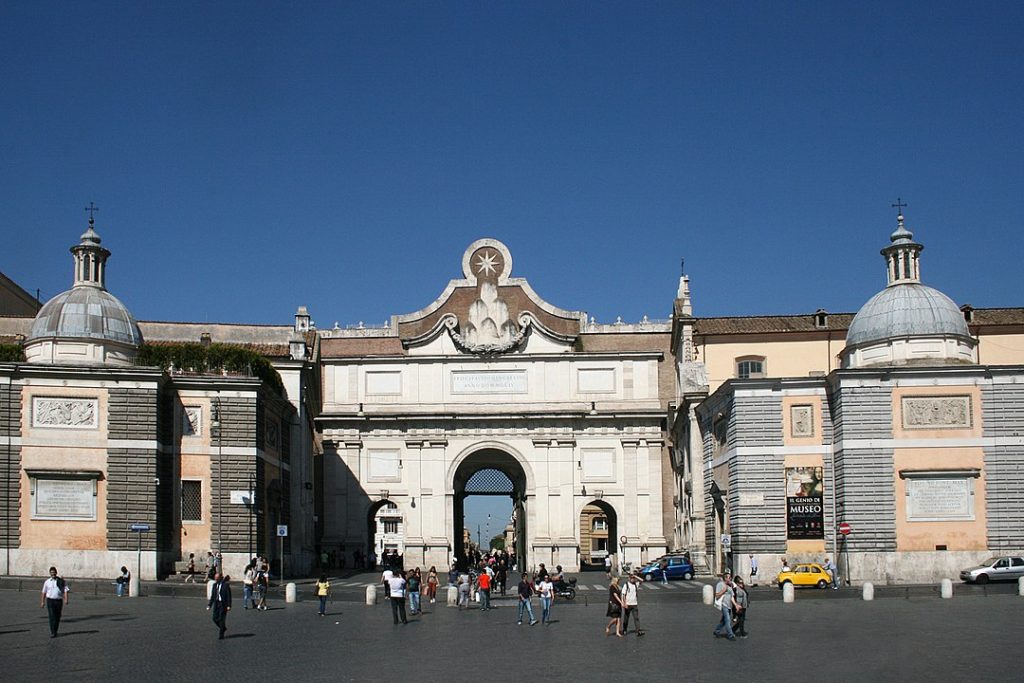
On the north side of the Piazza del Popolo rises the Porta del Popolo - monumental city gate, which for centuries served as the main entrance to Rome for pilgrims, travelers and crowned heads. Today it is one of the most distinctive places on the map of the Eternal City.
💠 From antiquity to the Renaissance
The original gate existed here in ancient times as a Porta Flaminia, which is the beginning of the road Via Flaminia. It was rebuilt in the 15th century, and in 1561 Pope Pius IV commissioned a new, more representative facade on the outside. He designed it Nanni di Baccio Bigio, inspired by the triumphal arches.
💠 Welcome to Rome
In 1655, the following entered the city through the gate. Queen Christina of Sweden, who converted to Catholicism and renounced the throne. In her honor, Gian Lorenzo Bernini designed the richer decorations on the plaza side - with papal coats of arms and Latin inscriptions:
"Felici faustoque ingressui MDCLV". - "For a happy and successful entry 1655"..
💠 The boundary between the outside world and the sacred
Porta del Popolo is more than just a gateway - it's a token threshold, through which one crossed the border between the secular world and the holy city. Today it is still very impressive, especially when you enter through it on foot, with the perspective of the entire square and obelisk opening before your eyes.
6️⃣ Church of Santa Maria del Popolo - a jewel of the Renaissance and Baroque
🦁 Fight for life and history in stone
👉 Discover Colosseum - 10 facts that will surprise you
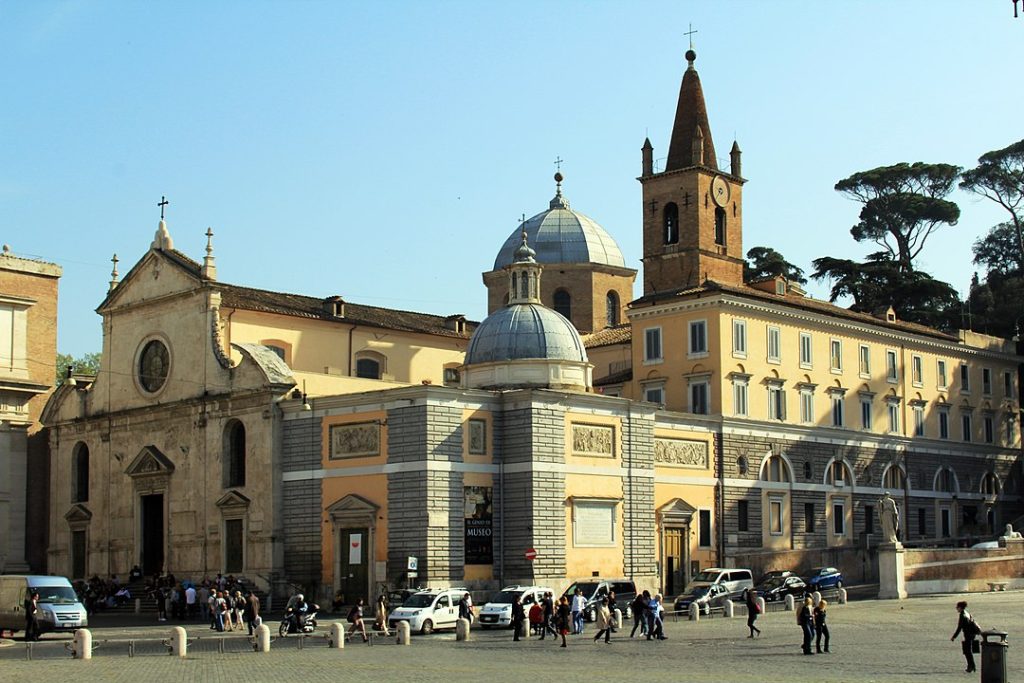
Modest on the outside, but stunning on the inside - the Santa Maria del Popolo is one of the most valuable churches in Rome. Located just off the Porta del Popolo, it has delighted pilgrims and art lovers alike for centuries. It is a true masterpiece gallery, hidden within the walls of the temple.
💠 Legendary beginnings
According to legend, the church was built on the site where it grew bad stand - haunted by the ghost of Emperor Nero. Pope Paschalis II had it beheaded and in the 11th century a chapel was built here in honor of Mary. In time, it was transformed into a full-sized church, and the name del Popolo was given as an expression of gratitude by the residents (Latin. populus - folk).
💠 Masters of the Renaissance and Baroque
The interior is a veritable feast for the eye - you'll find works by such artists as:
- Caravaggio (The famous paintings in the Cerasi Chapel: Conversion of St. Paul i Crucifixion of St. Peter),
- Raphael,
- Bernini,
- Pinturicchio (Frescoes in the Della Rovere Chapel),
- and interior design from Donato Bramante.
The temple connects Renaissance harmony with Baroque splendor.
💠 Silence and art just outside the hustle and bustle of the city
Although it is located in a busy square, the interior of the church surprises with its calm and atmosphere of reflection. It's an ideal place for a moment of reflection or an encounter with great art. without having to stand in line or buy a ticket.
7️⃣ View from Pincio Terrace - the best photos of Rome
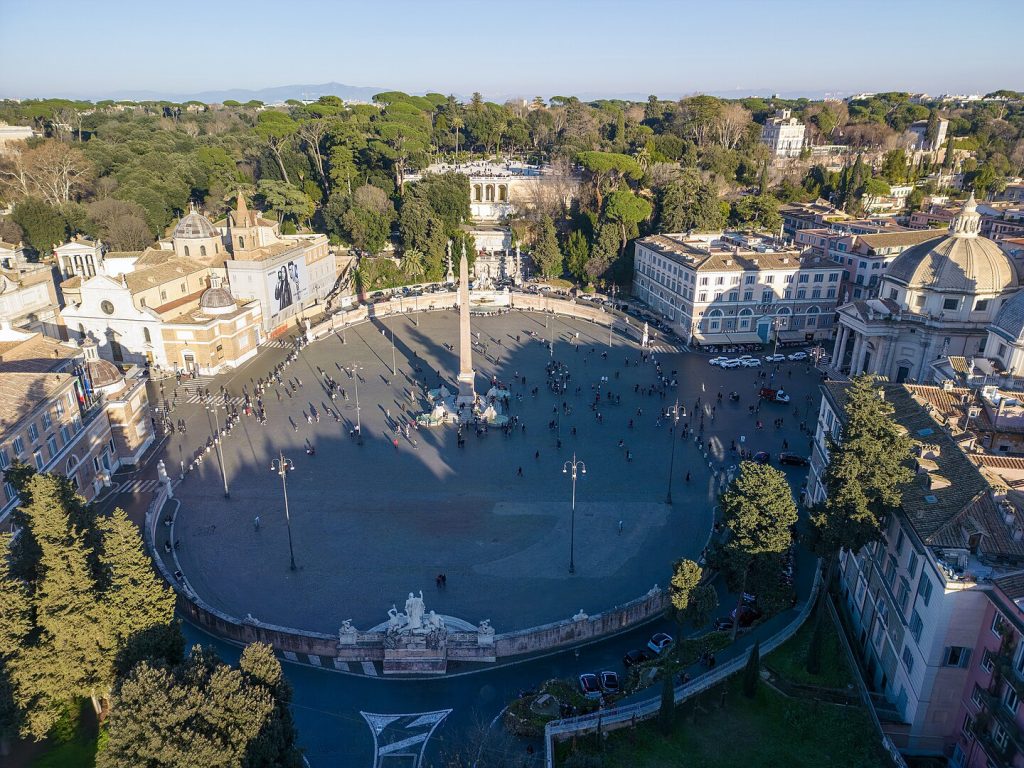
If you want to see Piazza del Popolo in all its glory, you must climb the nearby Pincio hill. This is one of those places in Rome that will take your breath away - both during the day and at sunset. The Pincio observation deck is a must-see on any walk through the city.
💠 Natural balcony over the square
The terrace is located just above Piazza del Popolo and is part of the extensive Pincio Gardens - an elegant, historic park designed in the 19th century. Just getting to it - winding staircase among greenery and marble balustrades - introduces the atmosphere of romantic Rome.
💠 Postcard-like view
The terrace overlooks panorama of the square with the obelisk in the middle, and beyond - to the rooftops of Rome, the domes of churches and the Via del Corso, leading towards Piazza Venezia. This the perfect place for a photo, a selfie or a moment of awe at how classic architecture blends with urban life.
💠 A place to meet and delight
In the evenings, the terrace bustles with life - lovers, photographers, tourists, and often artists and street musicians meet here. Sunset over the piazza and rooftops of Rome is an experience that stays in the memory for a long time.
8️⃣ Piazza del Popolo today - walk, events, relaxation
Although the Piazza del Popolo has thousands of years of history behind it, it still remains a vibrant place. It's not only a historic space, but also an active part of modern Rome - perfect for a stroll, a moment's respite or attending city events.
💠 Open-air museum
The square has retained its monumental character, but today it can be admired no automobile traffic, making it extremely pedestrian-friendly. It's a place where History and everyday life meet without conflict - You walk among the monuments, listen to street music, sit on a bench under an obelisk.
💠 The scene of urban events
From concerts and light shows to cultural festivals. Piazza del Popolo regularly becomes the scene of events organized by the city. Illuminations during the holiday season, sports broadcasts on the big screen or performances by artists all attract both tourists and residents.
💠 Meeting and relaxation space
The square is also ideal starting point for further sightseeing - Via del Corso, Pincio Hill, Villa Borghese or the Spanish Steps are all within walking distance. But even without a plan, it's worth just sitting here, enjoy a cup of coffee at a nearby cafe, look at the people and soak up the atmosphere of the city.
9️⃣ How to get to Piazza del Popolo - practical tips
Although Piazza del Popolo looks like a scene from a historical film, getting here is extremely easy - Both for those on foot and by public transportation. The square is located in the heart of Rome, just off the city's main arteries and close to famous tourist attractions.
💠 Metro A - fast and convenient access
The easiest way to get to the square is to metro line A - just get off at the station Flaminio - Piazza del Popolo, which is located just outside the northern entrance to the square, right next to the Porta del Popolo.
💠 Walk from the center - Via del Corso
If you are near Piazza Venezia or Spanish Steps, it is worth taking a walk. The route leads through the elegant and historic Via del Corso, one of Rome's main shopping streets that just ends at Piazza del Popolo.
💠 Access by bus or streetcar
There are also a number of bus and streetcar lines that stop in the area - including. 2, 61, 89, 490, 495 and others. Just get off at Lungotevere or in Piazza Flaminio, and then walk a few dozen meters on foot.
💠 By bicycle or scooter - modern and comfortable
Thanks to an extensive network of bike paths and the popularity of electric scooters, Piazza del Popolo is also easily accessible for micromobility users. Around the square you will find plenty of places to leave them safely.
🔟 What to see in the area - walk towards Piazza di Spagna and Via del Corso
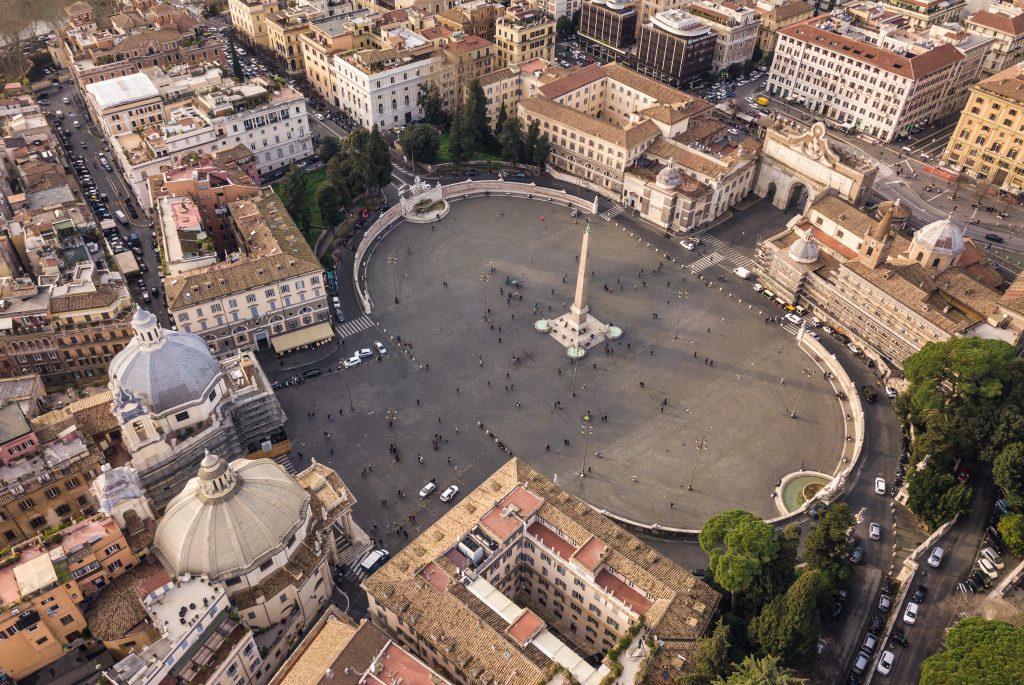
Piazza del Popolo is not just an end in itself, but also excellent starting point To explore some of the most beautiful places in Rome. More postcard-perfect sights, monuments and elegant streets await you within a ten-minute walking radius.
💠 Via del Corso - the bustling artery of Rome
Starting right in the Piazza del Popolo, Via del Corso is one of the city's main streets - full of stores, cafes and historic palaces. Walking along it towards Piazza Venezia, you pass, among others. Church of San Carlo al Corso, Colonna Square And you can sidle up to the Trevi fountain.
💠 Piazza di Spagna and the Spanish Steps
Turning from the square to the right, along the Via del Babuino, after a few minutes you will hit Piazza di Spagna - famous square with monumental Spanish Steps. It's one of the most recognizable places in all of Rome - perfect for a photo, relaxing or admiring the fashion showcases at the Via dei Condotti.
💠 Villa Borghese and the Pincio terraces
On the other hand, going from the square to the hill Pincio, you will find yourself in the gardens of Villa Borghese - The green heart of the city. It's the perfect route for a leisurely stroll among the trees, fountains and views. You can also visit Galleria Borghese, one of the most important art museums in Europe.
🏛️ Piazza del Popolo - more than a square
Piazza del Popolo is more than just another Roman spot on the map. It's symbolic entrance to the city, where history still breathes - In stone, columns and churches. From the Egyptian obelisk to the imperial gates to the twin churches, each element of the square tells its own story.
It is here Rome shows its multi-layeredness: Antique inspirations mix with Baroque flair, and the monumental space serves both everyday life and special moments. The square connects the past and the present - allowing for delight, reflection and a moment of rest in the rhythm of the city.
Walking around Piazza del Popolo, you feel that you are in the center of something bigger - Not only geographically, but also culturally. This is the perfect place to start your adventure in Rome.

